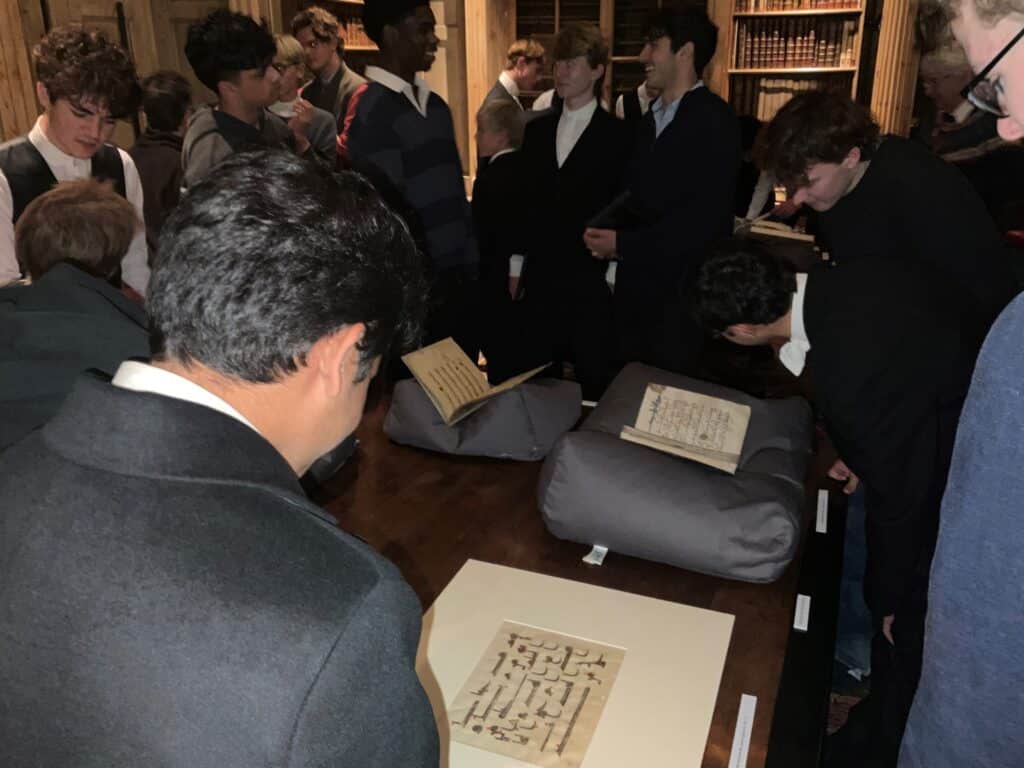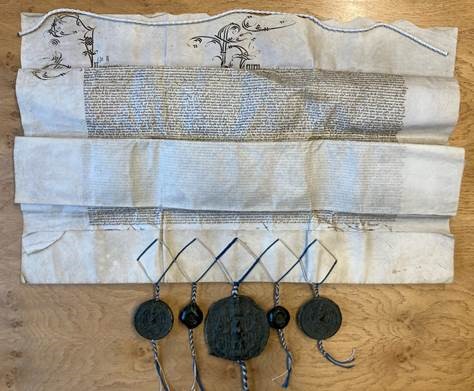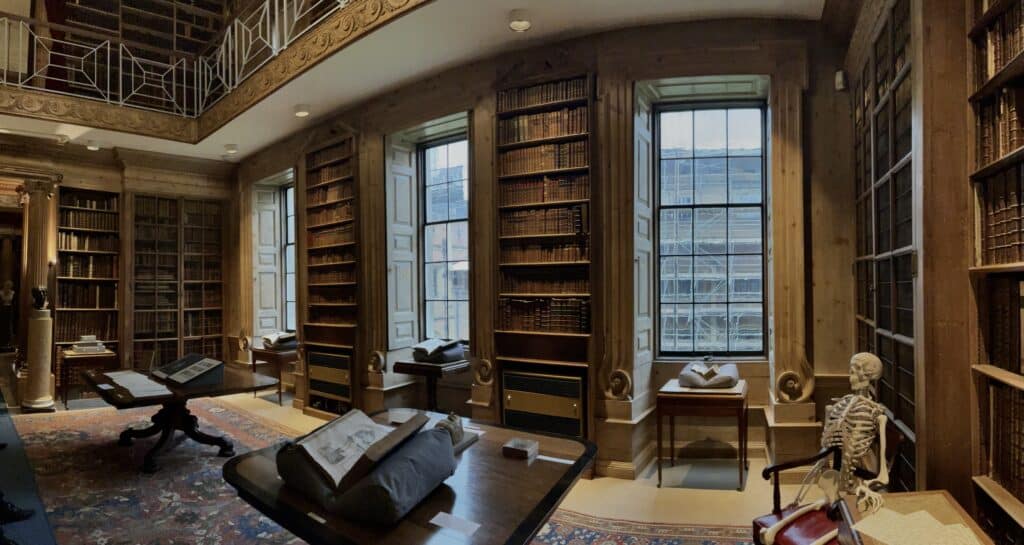St Andrew’s Day
Over a thousand boys, parents and other visitors came to see the Collections that were open for St Andrew’s Day. This included the Sport at Eton exhibition, the three museums and a special display of library and archives material in College Library.

Chapel Brass Restoration
30 brass memorial plaques have returned to College Chapel, having been cleaned and lacquered. This completes the first phase of a long-term plan that will see all the Antechapel brass memorial plaques restored.

New Album
A recent donation to the Photographic Archive is an album kept by Charles Andrew Gladstone (CAG), Assistant Master in French, German and Russian, 1912-46 and House Master of Penn House, 1925-43. It includes photos of the house and house teams, including hand-coloured images.

Arabic Teaching
College Library welcomed some two dozen highly enthusiastic members of the school’s Middle Eastern & North African and Savile Societies, a History for University (Oxbridge) teaching session and a visiting speaker for a special display of selected Quranic manuscripts, Persian poetry manuscripts and works on Arabic printed in the West, led by the head of Arabic and a member of the College Library team.

The Will of Henry VI
A founding document of Eton College, the ‘Will’ of Henry VI (ECR 39/78), has been treated and rehoused by the conservation team. In its smart new box, the document can now easily be displayed, and the five wax seals are protected, ensuring preservation for many years to come. The images show the will before and after conservation.


Ghost Stories
The English department’s Ghost Stories sessions returned to College Library with a rather larger model skeleton than in previous years as part of a display of sinister and unsettling objects intended to inspire creative writing for Year 10 and Year 11 boys. Find out more about these sessions here.

Snake Skeleton
A new acquisition for the Natural History Museum is a skeleton prepared from a dead grass snake collected in August 2023 from the hay meadow at Warre and Carter playing fields. The snake was probably injured during the tedding process, the way in which hay is mechanically spread out to promote drying prior to baling, and the skeleton has evidence of previous injuries, perhaps from the same process in earlier years.




